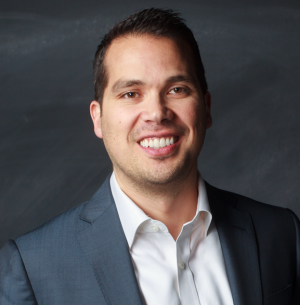2019 might go down as the beginning of the boom years for investment in legal technology companies (“Legaltech”), or it might be remembered as the good times that preceded yet another historic crash.
Let’s start with the good news. It’s both common knowledge and well established by research that the legal industry has historically been, to put it delicately, slow to adopt technology. If the greater business world is cruising along in a Tesla, most legal offices are puttering around in a ’97 Neon. That might finally be changing, at least if you judge it by the metric of investment in legal technology firms.
The ABA recently published an interesting overview of the upswing in investment in Legaltech over the past two-to-three years. For a long time, investors simply haven’t been interested in betting their dollars on the development of technologies specifically designed for lawyers. And why would they? There are some lawyers still drafting up briefs and contracts in Corel WordPerfect on a Windows 95 machine. The practice of lawyering has not experienced widespread technological disruption since perhaps the introduction of the email-enabled phone. If we can’t be bothered to update our antivirus software, how likely are we to sign on to expensive and complicated new technological platforms?
The Pump Is Primed
But to the VCs in Silicon Valley, well-established, technologically stagnant industries are an untapped well of profit. Silicon Valley thrives on forcing disruption, remaking old industries in a new image. The potential for a massive upside is certainly there, and more and more investors are now taking the swing, betting on projects that promise to improve the legal space.
Around $100M was invested in legal tech by VCs in 2012, whereas in 2018, that number was nearly $1.6B, a 20-fold increase over six years. 2019 is on pace to blow past 2018 both in the number of deals done and total dollars invested.
This is a good thing, full stop. Consumers of legal services stand to benefit across the board. Any innovation that makes legal services cheaper, more broadly available, more efficient, or more transparent is going to be a benefit to the customer.
Whether law firms benefit from these new technologies will depend largely on the firms themselves, but some likely stand to grow hugely off the back of these innovations. The firms that identify value-add technology early and beat the market in adopting it stand to increase their market share, develop happier clients, cut firm overhead, and potentially bring in entirely new lines of business. Integrating disruptive technology can be painful, but it’s a necessary step for firms looking to stay competitive in the coming economic lean times.
The Seven Worst Words In The World
Now for the bad news. It’s a fact that investment in legal technology is accelerating, but the reasons offered above aren’t the only possible driving forces in play. The best reason for investment in legal tech is the one we already explored: Law firms are finally becoming willing to adopt new technologies, and so a market is springing up to create tech for those firms to adopt, and VCs are joyfully funding that market. This rosy view is probably at least part of the reason for the uptick in investment, but there are larger industry trends at play that need to be factored in.
Howard Marks, a billionaire investor for Oaktree Capital, summed the problem up in a wide-circulated memo called “The Seven Worst Words In The World.” The entire memo is worth a read, but the titular seven words sum it up:
“Too much money chasing too few deals.”
That’s the basic problem of VC investing at the dawn of the 2020s. The world has figured out that investing in technology companies is cheap, but has tremendous upside compared to the cash required to buy in. For a relatively small investment, VCs essentially get a lottery ticket. If the company goes bust, they lose their modest investment. If the company turns into a unicorn, the VC might find itself billions of dollars in the black on a six- or seven-figure outlay.
The problem is that there are currently so many investment funds, angel investors, VC firms, and even sovereign nations chasing those investment opportunities that the price of investment has gone up across the board. Demand for tech companies to fund is drastically outpacing the supply of viable companies, and it’s likely leading to overpricing and excessive investment throughout the entire tech field.
This has two primary effects. First, it drives the price of investing up. When multiple investors are jockeying for the privilege of putting their money into the company, it’s generally the investors willing to put in the most money, while accepting the lease control, who get the nod. This is the dynamic that led to some of the more insane pro-company, anti-investor conditions at WeWork we explored in my last article.
The other effect is that it broadens the scope of what can be deemed an acceptable deal. Frustrated investors who missed out on the traditional tech companies will branch out looking for other industries where the competition is slimmer, industries primed for disruption… industries like Legaltech.
Combine it all together, and all signs are pointing to the VC industry being in a speculative bubble that, sooner or later, has to pop.
The Looming Crash
So here’s the question of the moment: how much of the recent rise in Legaltech investment is attributable to organic maturation of the market, and how much is just splashing over from the investment mania sweeping the larger VC world? If the Legaltech sector is developing mostly in line with the actual increasing value of investments and adoption of new technologies, then a pop to the larger VC bubble shouldn’t have all that much effect. In fact, it might even drive more investment to Legaltech if the market segment can weather a larger downturn intact, and prove that the market really is maturing.
On the other hand, it’s possible that most of this growth is just froth generated in the larger industry’s quest for the next billion-dollar business. If a popping VC bubble takes down the Legaltech sector, it could push us back even further on our profession’s quest to join the 21st century.
I plan to spend the next two columns digging deeper into the Legaltech industry as it stands. If we get lucky, we might start developing illuminating answers. If we’re luckier still, we’ll develop some even more illuminating questions.

James Goodnow
James Goodnow is an attorney, commentator, and Above the Law columnist. He is a graduate of Harvard Law School and is the managing partner of NLJ 250 firm Fennemore Craig. He is the co-author of Motivating Millennials, which hit number one on Amazon in the business management new release category. As a practitioner, he and his colleagues created a tech-based plaintiffs’ practice and business model. You can connect with James on Twitter (@JamesGoodnow) or by emailing him at James@JamesGoodnow.com.










 Lyle Moran is a freelance writer in San Diego who handles both journalism and content writing projects. He previously reported for the Los Angeles Daily Journal, San Diego Daily Transcript, Associated Press, and Lowell Sun. He can be reached at
Lyle Moran is a freelance writer in San Diego who handles both journalism and content writing projects. He previously reported for the Los Angeles Daily Journal, San Diego Daily Transcript, Associated Press, and Lowell Sun. He can be reached at 

 Kathryn Rubino is a Senior Editor at Above the Law, and host of
Kathryn Rubino is a Senior Editor at Above the Law, and host of 






 Jordan Rothman is a partner of
Jordan Rothman is a partner of